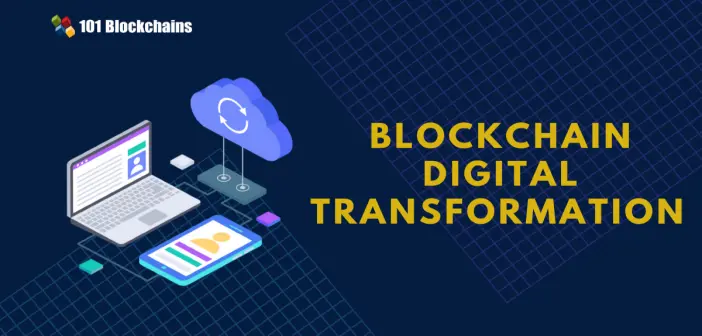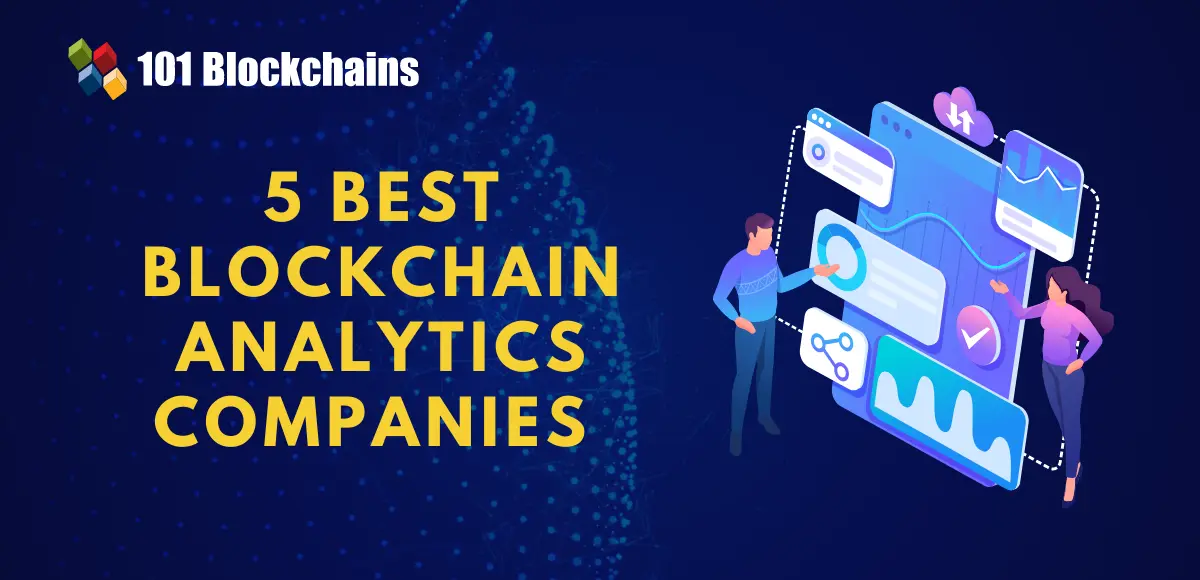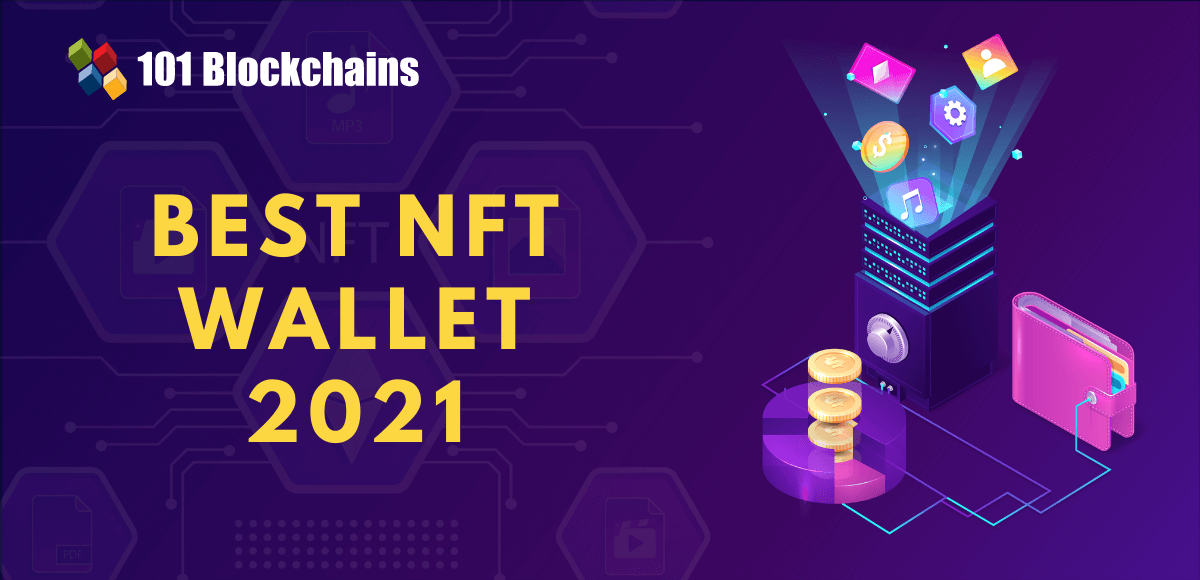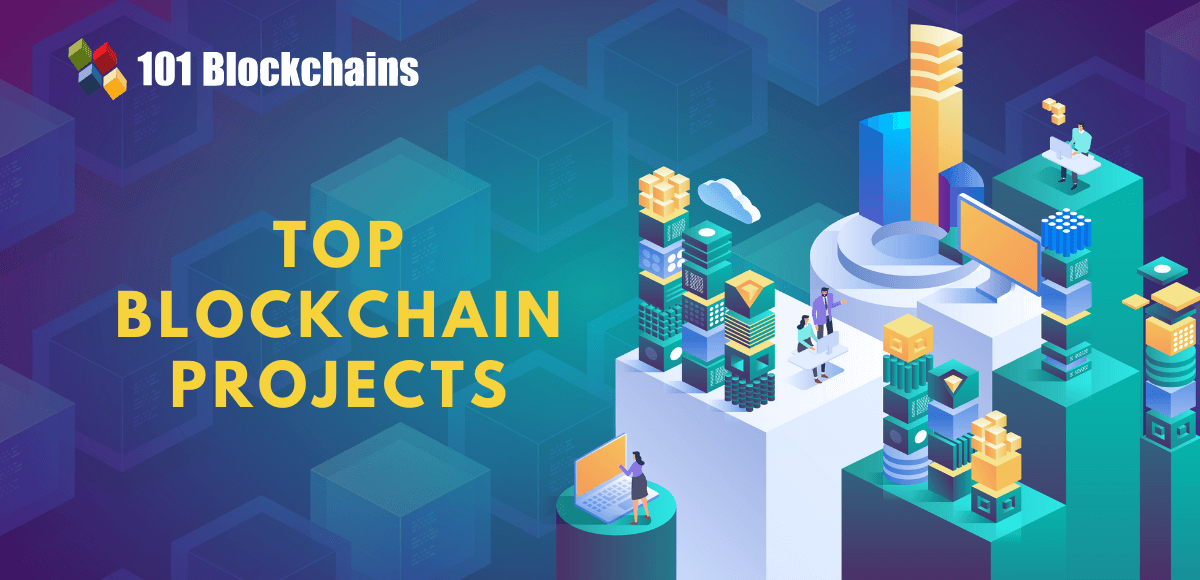Learn how blockchain truly works, master key definitions, and uncover what makes smart contracts so "smart." Dive into the fundamentals, gain valuable insights, and start your blockchain journey today!

- Reviews
101 Blockchains
- on March 24, 2019
Blockchain Digital Transformation – PowerPoint Presentation
In this article, we will be going through our vision and analysis of enterprise blockchains adoption and how we are going to achieve $3 Trillion of added value by 2030 using our blockchain PowerPoint presentation.
101 Blockchains is a blockchain research and strategic consulting company. We are focused on blockchain technology education and pushing the boundaries of public perception and understanding blockchain technology.
The World Trade Organization released a report on blockchain technology’s effect on international trade. According to the report, Blockchains economic value-add on a global scale could reach almost $3 trillion by 2030.
This blockchain presentation will give you a clear idea of the origins of Blockchain and where we are heading. If you like reading the article, we suggest you also download the blockchain PowerPoint ppt /blockchain pptx and share it with your friends. You can also use this as a free blockchain PowerPoint template in your other blockchain-related projects or blockchain introduction presentation (According to terms of use).
Want to become a certified blockchain professional? Enroll Now: Certified Enterprise Blockchain Professional (CEBP)
We will start with a few blockchain basics slides to make sure we are all aligned with the business blockchain:
Links to download: Blockchain pptx | Blockchain pdf | Blockchain Powerpoint
Slide-2: Public vs Private Network
Until now, the industry focus was primarily using public blockchain networks. Thanks to bitcoin, the first-generation cryptocurrency that bought the idea of Blockchain to us. It is then improved by second-generation Ethereum, which introduced smart contracts and dApps. Later on, other public networks such as EOS, NEO, etc., also made it to the market with improved implementation and sometimes different approaches.
On the other side, we have a private blockchain structure. In the past few years, hundreds of enterprises were building private networks or permissioned networks where every user is identified, verified, and receives data according to his defined permissions. This is how enterprises are adopting blockchain technology. One of the leading frameworks that offer permissioned network includes Hyperledger Blockchain. We will talk about it later on.
But, do we need to adopt blockchain technology? Let’s explore it in our blockchain technology presentation.
Also Read: Public vs Private Blockchain
Slide-3: Key Features of Blockchain
So, what makes blockchain technology so unique? Why are so many enterprises currently developing their own blockchain-based applications?
If we study the enterprises and how they are using the blockchain technology, we can see the following blockchain features that are utilized by them.
- Decentralized and distributed: A blockchain is a decentralized, distributed digital record of transactions (Ledger) that is secured using various cryptographic techniques.
- Enhanced security and immutability: Every transaction is first verified before being added to the Blockchain. Once added, they cannot be modified by any means. It is also easy to track transactions and verify them through a peer-to-peer consensus algorithm.
- Distributed Ledgers: All members in the network have access to the same “version of the truth,” but no single user can control it.
- Consensus-Based: In order to add a new transaction, we need to achieve network consensus. This creates a trustless environment. Without an efficient consensus mechanism, we would have a slow and expensive database.
- Faster: Thanks to the consensus mechanism, we have the trust and can approve transactions much faster.
Note: If you are building your own enterprise blockchains presentation, then we recommend including the key features of Blockchain as it can give the readers a good basic understanding of what Blockchain has to offer.
Loving what you are reading? If yes, share this best blockchain presentation (download blockchain pptx) with your peers!
Slide-4: History of Blockchain Technology
Is Blockchain overhyped? The answer is yes. Even though Blockchain might sound overhyped, in reality, Blockchain has improved a lot in the past few years. Let’s check out the history of blockchain technology.
You should also be familiar with Satoshi’s white paper, which was released 10 years ago. Another big event is the release of the Ethereum blockchain, which introduced two important concepts, i.e., smart contracts and decentralized applications (dApps). However, two more major events influenced the enterprise blockchains world. They are as follows.
R3: In 2014, Blockchain Technology R3 was formed. Forms Consortium is also established with over 40 legacy financial companies for implementing blockchain technology. R3 blockchain platform named Corda has a strong presence in the finance sector, which signals the success of the project.
Hyperledger: In 2015, the Linux Foundation unveiled an umbrella open-source blockchain project called Hyperledger. Under the leadership of Brian Behlendorf, Hyperledger is being used almost in all enterprise blockchains projects.
These 2 events are major events that shaped the current blockchain ecosystem. Instead of having one big network, we have many customized dedicated networks according to each organization’s needs.
We are not sure how Blockchain will perform in the future, but 2019-2020 are defiantly the years of the enterprise blockchains. This is where we will witness more and more dedicated networks that will serve specific use-case. In short, we will see more examples of distributed ledger technology (DLT) being used in centralized organizations.
Enroll Now: Getting Started with Hyperledger Fabric
Slide-5: Types of Blockchains
Basically, there are three types of blockchain networks: Public, Private, Federated
In a public blockchain network, anyone is allowed to join and participate. Not only that, but everyone is also allowed to go through the Ledger and participate in the consensus of the network.
In private blockchains, a single organization will have authority over the network, where they will dictate who can join and access the network.
Think of it as a centralized-decentralized network.
But with federated Blockchain, you’ll get a decentralized private environment.
Sound confusing? Don’t worry, we got you covered. In federated Blockchain, instead of one organization maintaining the network, there would be multiple organizations who will take decision making role.
The presence of multiple parties on the network establishes the decentralized structure of the federated Blockchain.
There are also two types of permissionless Blockchain.
Permissionless is open to everyone to join, view and precipitate.
On the other side, permissioned enterprise blockchain doesn’t necessarily need to have a native token or asset for their platform. They also do not need miners, and they also need tokens. They are permissioned, which means that their owners tightly control it and customize it to their needs.
Want to know more about Blockchain Transformation? Enroll in our Certified Enterprise Blockchain Professional (CEBP) course now!
Slide-6: Use Cases Value > Implementation Challenges
There are many different enterprise blockchain use cases. However, there are implementation challenges as well as pertaining to each use case. Blockchain’s trust creates a whole new value as it enables organizations to handle counterfeit and corruption in a much better way. It also improves the supply chain, automates processes, and improves data storage and access.
By using blockchain technology, banks can make their users the center of their user experience. Right now, most of the major banks are already in the process of examining and adopting blockchain technology, even though they are not found of bitcoin.
As we already mentioned, there are blockchain adoption challenges considering it is still a new emerging technology. However, the value continues to grow, as we can see from the current blockchain ecosystem around us. With time, we will be able to solve more challenges and incorporate blockchain technology better.
Two key use cases of blockchain technology include tracking products and managing supply chains. One vertical that benefits immensely include the Oil & Gas Vertical. Shell is currently investing in Blockchain as Accenture reports suggest that Blockchain can save 5% revenue just by improving accuracy.
Most of the time, when people think about Blockchain, they think about bitcoin. Bitcoin is a first-generation blockchain cryptocurrency, but Blockchain is more than a cryptocurrency.
Slide-7: Non-financial Enterprises
As you can see, there are 20 leading enterprises implementing blockchain technology.
- Automotive giants like Ford & Toyota implementing Blockchain in their smart mobility solutions.
- Retail giants like Walmart and Nestle are implementing Blockchain for tracking food products. Walmart is utilizing IBM Food Trust for everyday operation; it uses Blockchain to track and manage all its retail goods.
- Insurance giants like Metlife & Prudential are experimenting with Blockchain for insurance with automated insurance claims and trade solutions
- Shipping giants like FedEx & Maersk are establishing platforms powered by Blockchain for trading that will monitor cargo shipping.
- Even Facebook is working on its own blockchain team to examine the value-added of blockchain technology.
But that’s just the tip of the iceberg. Let’s look at more interesting projects, especially related to federated networks.
Slide-8: Federated Blockchain Networks
During the past three years, massive efforts are taken in establishing federated networks. More than dozens of projects are utilizing Hyperledger or R3 Corda, as we can see in the infographic! We now have a trusted environment between groups of banks, insurance providers, and supply chains.
A Federated network is the next step in the progress of blockchain technology. Its next phase will be to deploy an added value application(s) that will run on top of these networks.
One Example is B3i, which is using R3’s blockchain technology for digitizing all official insurance documentation. This will enable the companies to streamline their services and ensure better satisfaction from their consumers.
There are also some major software vendors that are already taking an active part in this new ecosystem. Let’s explore them.
Slide-9: Enterprise Blockchains Ecosystem
The Enterprise Blockchains Ecosystem is super-fast evolving with vendors that offer Blockchain as a service. We will also have different enterprise blockchains platforms such as Corda, Hyperledger & Ethereum.
Here’s a guide to Hyperledger vs Corda r3 vs Ethereum that you can check out
These vendors are currently active and invest efforts in technology developments and the sales and marketing aspect. As of 2019-2020, we are going to see more and more investments by these vendors.
Oracle also recently announced that there are more than ten projects in production on their Blockchain as a service platform.
Oracle, like most of the rest, developed their blockchain platform on top of the Hyperledger framework. Hyperledger was the first to focus on dedicated networks and hence have the first movers advantage.
Let’s drill down further to the Hyperledger ecosystem.
Want to know more about BaaS? Enroll Now: Getting Started with AWS Blockchain as a Service (BaaS)
Links to download: Blockchain Architecture ppt | Blockchain pdf | Blockchain Powerpoint
Slide-10: Hyperledger Blockchain Ecosystem
Hyperledger is known for its ecosystem and hence is one of the most popular enterprise blockchains. It is actively used by major supply chains such as Food Trust with Walmart.
Hyperledger is co-operating with all the vendors, and as we can see the results with Oracle, AWS, Microsoft AZURE blockchain, even Samsung is developing its blockchain application utilizing Hyperledger.
In Hyperledger’s vision, “there will be a world of many chains, some public networks like Bitcoin and Ethereum, some private networks, some permissioned, some without. Every community can have its own type of network.”
Similarly, the Apache webserver gave people the tool to build their own website rather than making them use one big site.
- London Stock Exchange Group: London Stock Exchange Group is using Fabric to create a financial business network. They plan to use the network to achieve interoperability with their existing systems, thus promoting their efficiency.
- T-Mobile: T-Mobile created the Sawtooth Hyper Directory using Hyperledger Sawtooth to provide Access and Identity management solutions.
Healthcare is also one of the leading healthcare enterprises to adopt Hyperledger. Let’s dive into the Healthcare vertical.
Slide-11: Healthcare
Distributed Ledger Technology can actually save a life! How?
- By Tracking The Supply Chains, Counterfeits Are Kept at Bay – With around 10 to 30% of the drugs counterfeit, the drug counterfeit is a big problem for the whole health industry as it amounts to $200 billion annually.
To stop drug counterfeit, all drugs are first registered on the Blockchain before they leave the manufacturing firm. This means that if a drug’s record is not found on the Blockchain, it can easily be identified as counterfeit. - We Can Put an End to The Silos of Data and by utilizing the network of trusts. We can enable transparency faster and in a better way. Clinical trials produce tons of data, and Blockchain for Healthcare can help them store in a distributed network, making them easily accessible to everyone. The data includes statistics, reports, surveys, medical imagery, blood tests, and so on.
- The Claim Process Is Improved by Sharing the Data Securely. Healthcare billing and claims suffer from fraudulent activities. Blockchain can truly transform the claim process by providing a trusted network.
Blockchain’s impact has also been seen on government services. Let’s explore them next.
Enroll Now: Enterprise Blockchains and Supply Chain Management Course
Slide-12: Blockchain for Government Services
Blockchain for government offers a layer of the trusted network where there will be paperless documentation. The key here is paperless documentation, as we all know how papers can bring in a lack of trust as it means data can be manipulated or error can go through.
Not to mention, the paperless system can process a huge chunk of data at once, such as bill payments, visa applications, and more.
Here is just a shortlist of countries which already adopting Blockchain to improve their services, increase transparency and fight corruption.
- Switzerland: The city Zug created a new platform called ZugID. This application will let all the citizens of Zug get access to e-governance in a secured manner.
- Brazil: The government teamed up with uPort for IDs and documentation.
- Estonia is an excellent example. They already implemented Blockchain on their lands registry in 2014.
Voting is also one of the best examples showcasing how governments can adopt Blockchain.
Trust is a core capability that thrusts Blockchain into the government processes. In each one of the government entities, trust plays an important role. As each system is complicated and involves few stakeholders, Distributed Ledger & Blockchains seems to be the right technology for transforming the way we interact and function.
Enroll Now: Enterprise Blockchains Fundamentals Course
Slide-13: Centralized vs Decentralized Internet
Now let’s take a moment to understand why Blockchain is a fundamental technology. It is trustless. More so, it is a whole new network structure where instead of having one single authorization entity, we have a network where every node can participate in the consensus method. It also means new data flow as each node is connected. Not to mention, it also means new business models.
Blockchain offers tons of business opportunities to the current companies. Uber & Airbnb is a great business model of Web 2.0. Both Airbnb and Uber are founded in 2008 and 2009, respectively, whereas the internet first went public in the early 90s. This means we need to be more patient when it comes to innovation.
Let’s look at the history of the web more deeply.
Here’s a guide to Centralized vs Decentralized Internet that you can check out.
Slide-14: Web 3.0 will be powered by Blockchain
Let’s take a look at the history of the web. We all are familiar with Web 1.0, where emails are the norm. But at that time, we complained about how we cannot send photos. However, it slowly scaled thanks to the engineers working to improve it.
Technological advancement never stopped as Web 2.0 soon transformed the internet around us. It gave rise to the information-centric internet with services such as Wikipedia, Youtube, and Facebook. As of now, these big companies control the internet and its users.
Similarly, Web 3.0 will be the future as it is going to transform the world around us completely. Web 3.0 is unique because of two reasons.
- Blockchain is all about Trust
- Blockchain will make people valuable again
Distributed Ledger will serve as key infrastructure layer in a new internet of trust where different devices including smart cars can interact with each other and achieve agreement utilizing consensus method. User privacy will also be improved where users will feel safer and connected at the same time.
So, is Web 3.0 a possibility? Of Course, it is, but there are obvious challenges that it first needs to overcome. Let’s look at the challenges below.
Links to download: Blockchain technology powerpoint presentation ppt | Blockchain presentation pdf | Blockchain Powerpoint
Slide-15: Top Blockchain Adoption Challenges
We can divide the top enterprise blockchain implementation challenges into two main categories: Human Factors, Technological Factors.
We can speak about regulations, public perception, and skill set, but it is all due to lack of knowledge at the end of the day. And, this is exactly what we are doing at 101 Blockchains, providing valuable information to their readers.
Human Factors:
- Regulations
- Criminal Connection
- Public Perception
- Skill Set
- Technological Design
Technological Factors:
- Scalability
- Performance
- Energy Consumption
- Privacy
- Security
Slide-16: Blockchain Transformation Playbook
Blockchain implementation is far more complex when compared to general application install. This means that you cannot ask your team to install Blockchain just like you do to install a web server. Blockchain provides a robust network where each process can interact with each other and maintain a high level of trust and transparency.
From our experience, you will see in the blockchain transformation playbook, the five steps to achieve blockchain excellence within your organization include the following:
- Start Small
- Build A Task Force
- Train & Educate
- Develop Strategy
- Communications
Slide-17: Are you a DOER?
101 Blockchains is more than just a research & consulting company. We provide infographics, guides, and reviews and consists of a community of DOERS. People just like me & you who share the same vision about the importance of blockchain education can thrive on 101 Blockchains.
So, how can you benefit from 101 blockchains?
As an individual, you can extend your knowledge, contribute to guest posts and even join our ambassador’s program.
As a company, you are welcome to join our partnership program or work with us directly on your own projects.
Slide-18: Thank you
Thanks for reading. We are at a fascinating stage as more enterprise blockchains are adopted industry-wide! You can also start learning about Blockchain, and it is never late to start learning.
Do not forget to click on the link of blockchain PowerPoint ppt download. The blockchain presentation ppt contains good blockchain use cases ppt.
It can also be downloaded as a blockchain PowerPoint pdf or a blockchain PowerPoint template for building your own blockchain ppt. (according to terms of use).
You can start with our free blockchain course to learn more about blockchain technology and understand the elements more thoroughly.




